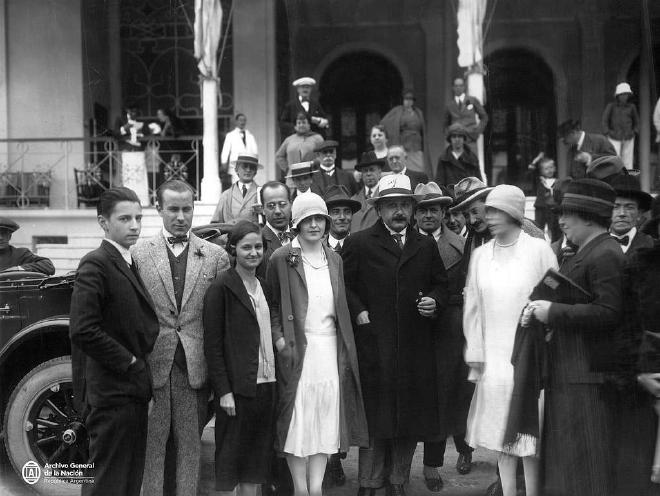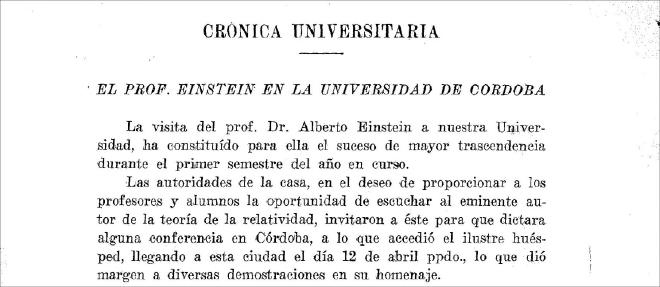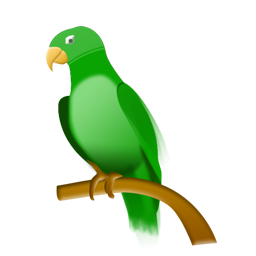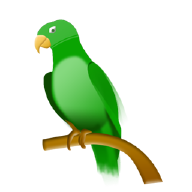
On April 12, 1925, a train brought one of the most illustrious figures in world science to Córdoba: Albert Einstein, wrote Lucas Viano, from UNCiencia. One hundred years have passed since that brief visit, which lasted only two days.
To commemorate this anniversary, several scientific institutions in Córdoba and the country are organizing artistic and outreach activities related to this genius and his scientific work.
When Einstein (1879-1955) arrived to Argentina, he was already a global figure. It had been 20 years since he developed the Special Theory of Relativity, published in 1905, where he introduced the famous equation E=mc², which relates energy to mass. And it had been 10 years since the General Theory of Relativity, which revolutionized the understanding of gravity by describing it as the curvature of space-time.
In 1921, he had received the Nobel Prize in Physics, although, interestingly, for neither of these two theories. He received it for his explanation of the photoelectric effect, fundamental to the development of quantum mechanics.
Please read the article by physicist Horacio Pastawski: The Elusive Nobel Prize of Albert Einstein
Einstein was 47 years old when he visited Argentina. In 1925, the world was still recovering from World War I (1914-1918). In Argentina, the president was Marcelo T. de Alvear (term 1922-1926). The governor of Córdoba was Julio Argentino Roca (son of the famous military man and two-time president of the country). The rector of the National University of Córdoba was Dr. León Morra.
Argentina was in a stage of economic growth thanks to the agro-export model that took advantage of the post-war crisis. Electric trams were circulating in the main cities, and radio was beginning to establish itself as a mass communication medium.

Einstein’s first days in Argentina #
The illustrious physicist arrived to the country at the initiative of engineer Enrique Duclout. He arrived on the ship Cap Polonio at the port of Buenos Aires on March 25, after three weeks of travel. Many Argentine intellectuals sought his greeting and exchanged a few words.
Among them was Leopoldo Lugones, he was born in Villa de María de Río Seco, Córdoba. He was perhaps the only Argentine intellectual whom Einstein had met before his trip.
“Einstein had shared with Lugones, Marie Curie, Henri Bergson, and other eminent figures, the discussion table of one of the most important intellectual forums of that time: the International Committee for Intellectual Cooperation of the League of Nations; Lugones represented Argentina there. This was a previous embryo of UNESCO,” noted Alejandro Gangui and Eduardo Ortiz in a chronicle of the visit. You must download and read it!
The University of Buenos Aires requested Einstein to give 12 scientific lectures. He also visited the National University of La Plata. And he met with a young Bernardo Houssay, future Nobel Prize winner from Argentina.

What did Einstein do during his brief stay in Córdoba? #
Einstein arrived to Córdoba on a train from Central Argentino from La Plata on the morning of Sunday, April 12. He was received by a committee of university authorities, professors, and members of the National Academy of Sciences. He stayed at the Plaza Hotel.
His visit to Córdoba was mainly attractive for the sierras. A few hours after arriving, he set off by car to take a tour of the city of La Falda. He had lunch at the Hotel Eden and returned through the Sierras Chicas and Alta Gracia. He passed by the San Roque dam. That night, back in the city of Córdoba, he was honored with a gala dinner at the Plaza Hotel.
On Monday the 13th, he gave a conference in the auditorium of the rectorate of UNC, located in the Jesuit Block (current address: Obispo Trejo 242). After the event, he went to the hotel for lunch and in the afternoon returned to Buenos Aires by train.
In the port city, he completed the last scheduled lectures at the UBA, and on the night of April 23, Einstein left Argentina forever.

Einstein’s conference at UNC #
Einstein was introduced by the rector himself, Dr. Morra, who said the scientist had “his name inscribed in the book of geniuses and wise men, among the great promoters of humanity, in the paths of science.”
“His innovative ideas, his advanced theories that initiate transformations in physics, philosophy, mechanics, and so many other aspects of universal life, which affect even the oldest and most established concepts of time and space, have produced the admiration of the world, and his name is mentioned alongside those of Copernicus, Newton, and Galileo.”, Morra added.
Einstein began his dissertation by thanking the warm reception and recognition from UNC. He explained the development of his theories in three phases. The first addressed restricted relativity, which reformulated the understanding of space and time.
Later presented general relativity, in which it reformulates gravity as a curvature of space-time instead of a force. Finally, he mentioned a third phase “still in development.” Until the end of his days, Einstein sought a unified theory that combined gravitation with electromagnetism. “For complete satisfaction of our philosophical longings, it is necessary to seek such a combination,” he concluded. That task is still pending for science.

